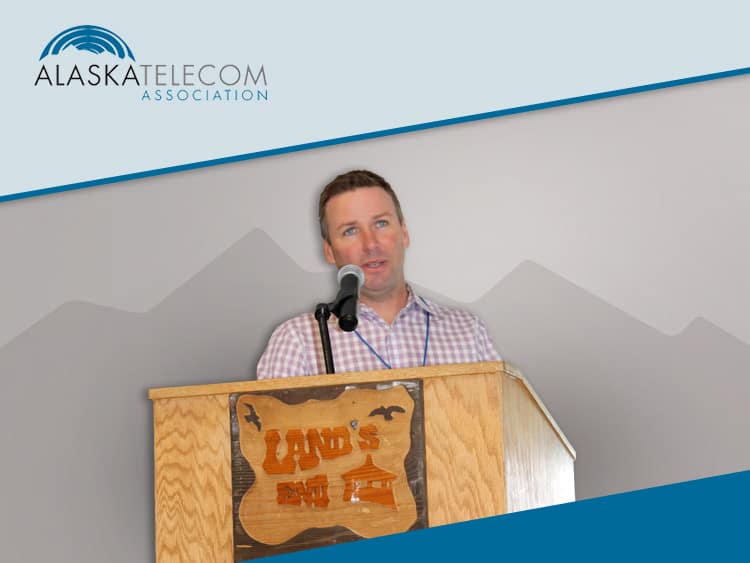Last month, our Service Provider Partnership Manager Tim Riley and Network Engineer Jason Warchol traveled to the Alaska Telephone Association 2018 Annual Meeting. In Alaska, where we recently announced a partnership with Governor Bill Walker to address statewide school connectivity, the challenges that rural Alaska communities typically face in getting scalable broadband infrastructure are especially acute. The Alaska K-12 Broadband Initiative aims to help state leaders, service providers, and school districts navigate these challenges so that Alaska’s students have the same access to digital learning as their peers in other states and locales.
Tim and Jason also met with Jack Johnson, the director of technical services at Anchorage Public Schools. Johnson discussed his plans to go out to bid for wide area network (WAN) and Internet Access funding this year, particularly the challenges his district has traditionally faced connecting classrooms and his ideas for solving them.
Below is some background about the impact of Alaska communities’ unique geography on public school Internet access, as well as some solutions that rural communities and other states have leveraged to connect K-12 students.
What Connectivity Challenges do School Districts in Alaska Communities Face?
E-rate data shows that approximately 59,107 students in Alaska do not have the bandwidth they need to access digital learning opportunities in the classroom. In addition, there are approximately 123 schools in the state that lack scalable broadband infrastructure.
For the vast majority of school districts we’ve worked with since 2013, fiber-optic infrastructure has been the solution that best met current and future connectivity needs, both in terms of affordability and broadband speeds. However, we have always worked with each district to identify which infrastructure solution is best for them. In Alaska, the extraordinary geographic landscape, extreme weather patterns, wildlife patterns, and remote location of many schools means that a “one-size-fits-all” approach to school connectivity will not apply.
As many rural districts nationwide have faced, affordability is a significant concern. For service providers, there is not always an obvious payoff for building expensive infrastructure through rough terrain for schools with very small populations. Many school districts are also located on islands, ruling out the option for providers to build fiber infrastructure. Fortunately, there are a myriad of ways that the funding provided by the E-rate program can benefit both rural communities and the providers that serve them. Our belief is that with strategic planning and leveraging of federal and state funding, connecting K-12 classrooms is beneficial for all.
How Have Other Communities Secured Broadband Access?
Giving students access to the connectivity they need for digital learning is rarely a linear path, particularly for school districts that have limited monetary resources or other challenges that have traditionally blocked them from educational equity.
While the infrastructure solution for each school district can differ based on costs and geography, there are a variety of ways that school districts around the nation have achieved greater connectivity. Some of those strategies have included:
-
- Tapping into neighboring fiber construction projects to cut down on costs. A fiber build can have high upfront costs, so this can be a great strategy where it’s available. Learn about the success that a small, rural school district in Arizona experienced by joining an existing fiber build.
- Some school districts with small populations or significant geographic barriers may find that fixed wireless or low orbit satellite infrastructure supply sufficient bandwidth for their digital learning programs. While not the most scalable solutions, they can be adequate alternatives for districts with relatively low technology needs or extremely rural locales.
- Forming a consortium with other school districts nearby to maximize collective purchasing power. Read about how several Colorado school districts leveraged consortia to get the connectivity they needed.
- In addition to E-rate funding, there are also state-level, NGO-based, and federal funding sources that can help school districts fund as much of their network infrastructure and device management projects as possible.
Our team enjoyed engaging with Alaska’s broadband leaders in May, and we look forward to supporting the state’s efforts to connect every public school classroom to high-speed Internet.
Continue browsing our blog to stay up-to-date on our work with states, service providers, and rural communities.






